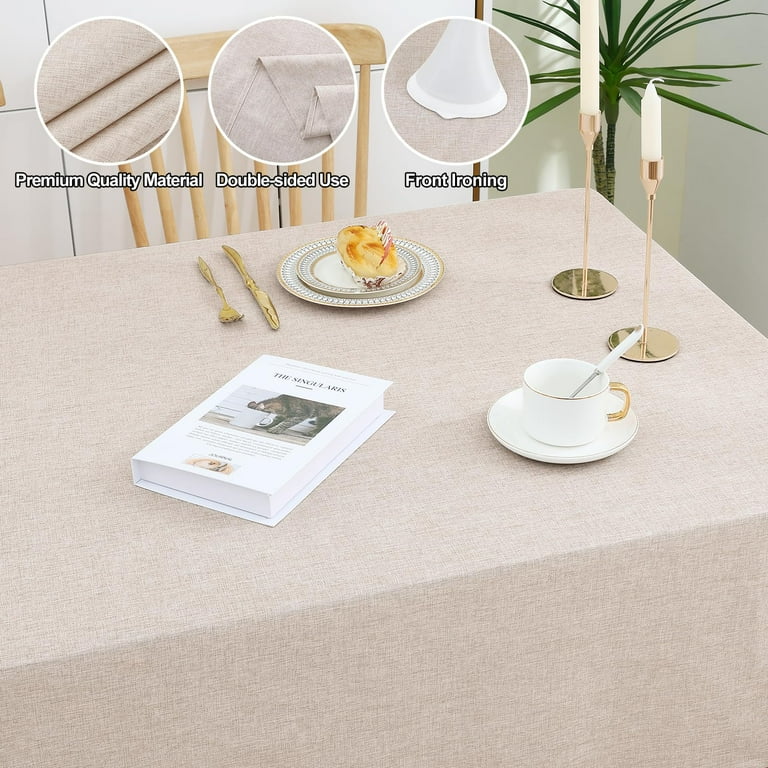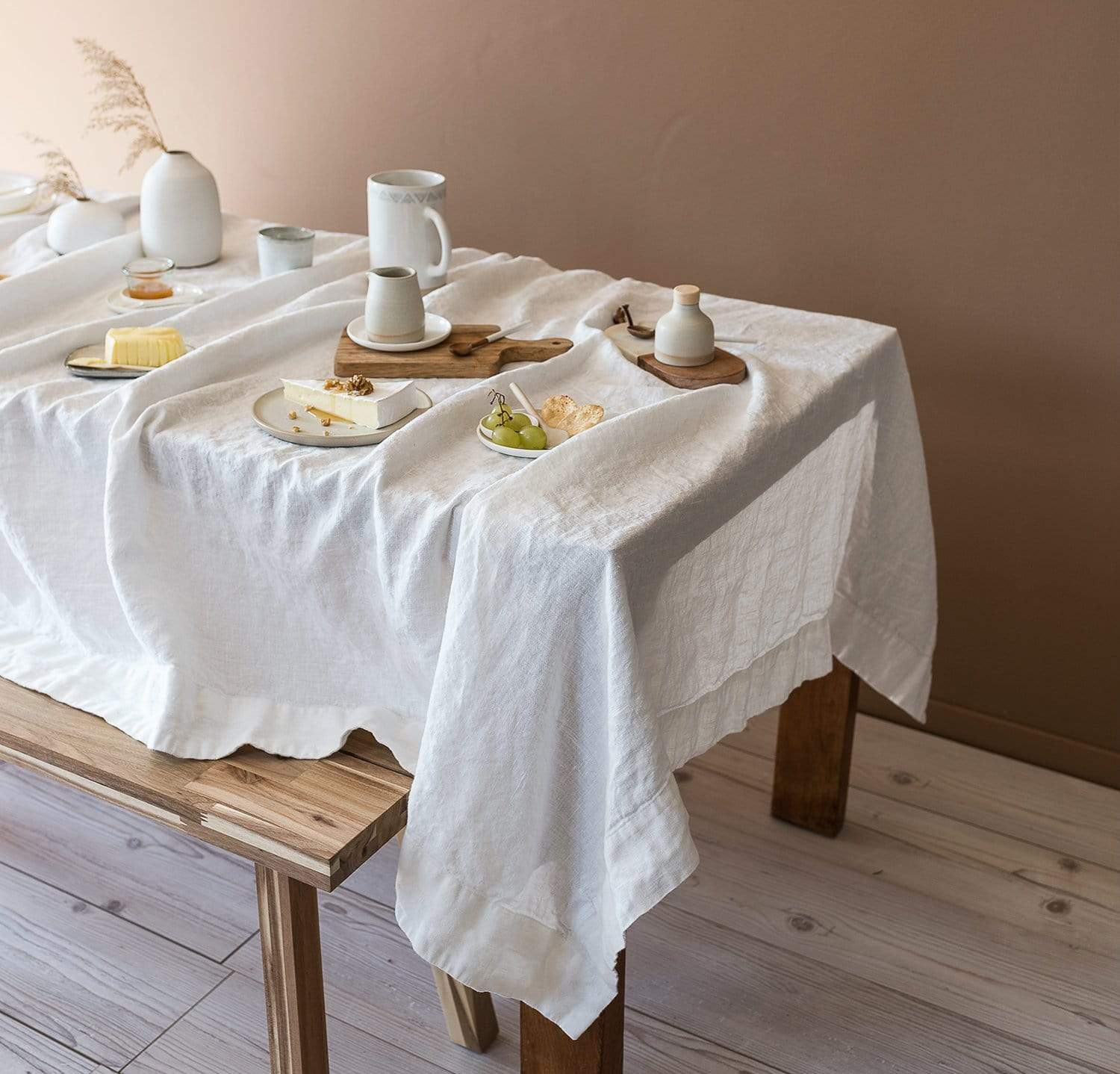Innovative Table Runner Utilizes: Beyond the Dining Table
Innovative Table Runner Utilizes: Beyond the Dining Table
Blog Article
Linen Textile Developments: Checking Out Modern Trends and Creative Applications in Layout and Fabric Sector
From sustainable production approaches to sophisticated weaving modern technologies, the development of bed linen is reshaping the landscape of the fabric sector. As we dive right into the worlds of innovative design applications and the emergence of bed linen blends and hybrid textiles, a brand-new phase unfolds in which linen's duty in future textile developments takes center stage.
Lasting Practices in Linen Production
Lasting methods in bed linen manufacturing have become progressively crucial in the fabric industry's initiatives to decrease environmental impact and advertise moral sourcing approaches. Bed linen, a natural fiber stemmed from the flax plant, provides a variety of benefits such as breathability, biodegradability, and toughness. However, standard techniques of bed linen production can entail considerable water intake, pesticide use, and energy-intensive processes.
To resolve these challenges, lots of textile makers are taking on lasting practices throughout the bed linen production procedure. This consists of sourcing flax from organic ranches that avoid hazardous pesticides and chemicals, executing water-efficient retting methods to remove fibers from the flax stalks, and using eco-friendly dyes and surfaces. Additionally, some companies are spending in renewable resource sources to power their production centers and minimizing waste with recycling and upcycling initiatives.
Technological Developments in Bed Linen Weaving
With the expanding emphasis on sustainable techniques in bed linen manufacturing, the textile market is currently experiencing a rise in technical advancements particularly intended at changing the art of linen weaving. These developments are reshaping the method linen fabrics are generated, offering raised effectiveness, high quality, and imagination in weaving methods.
One of the essential technical developments in linen weaving is the assimilation of computerized looms. These sophisticated looms are geared up with software application that permits intricate and complex designs to be woven with precision. By digitizing the weaving process, manufacturers can attain higher uniformity and precision in their bed linen materials.
Moreover, innovations in yarn spinning technology have actually allowed the production of finer and even more durable bed linen yarns - table cloths. This causes softer and smoother linen textiles that maintain their quality also after multiple usages and washes
Furthermore, the development of eco-friendly dyeing processes and surfaces for bed linen fabrics is obtaining grip. These sustainable techniques not only decrease the environmental effect yet also cater to the increasing customer need for ethically generated fabrics.
Creative Layout Applications for Linen
Cutting-edge imaginative strategies are increasingly shaping the innovative style applications for linen in the fabric market. Bed linen's natural aesthetic appeal and capability to mix with various other materials make it a preferred selection for producing one-of-a-kind garments and accessories that cater to the environmentally conscious consumer.
In addition, developers are try out linen in home design, utilizing its sturdy and breathable nature to craft fashionable home furnishings such as drapes, bedding, and upholstery. The texture and drape of linen bring a feeling of sophistication and comfort to interior areas, adding a touch of sophistication to contemporary homes.

Bed Linen Blends and Crossbreed Fabrics

Crossbreed materials, on the other hand, take the principle of blending an action better by integrating additional components such as metallic threads, recycled products, or conductive fibers. These ingenious textiles not just broaden the design opportunities yet additionally introduce functional facets like conductivity, antimicrobial buildings, or improved resilience. Crossbreed materials are progressively being made use of in different industries, consisting of fashion, interior decoration, and technical textiles, where the demand for multifunctional products gets on click here to find out more the increase.
Bed linen's Role in Future Textile Innovations

In the world of future fabric innovations, linen is expected to be a vital player in the growth of innovative functional fabrics. Researchers and designers are checking out means to boost bed linen's inherent qualities through technological developments, such as integrating wise fabrics, nanotechnology, and efficiency surfaces. These technologies intend to boost bed linen's efficiency features, making it ideal for a more comprehensive variety of applications, from activewear to protective clothing.
Moreover, the mix of bed linen with various other all-natural or artificial fibers opens limitless opportunities for producing novel textiles with unique residential properties and capabilities. By leveraging bed linen's characteristics and checking out innovative blends, the textile sector is positioned to present interesting developments that accommodate advancing customer demands and sustainability demands.
Final Thought
To conclude, the exploration of lasting techniques, technical improvements, innovative design applications, linen blends, and its duty in future fabric advancements highlight the constant evolution of linen textile in the contemporary design and textile sector. With a focus on innovation and creativity, the versatility and eco-friendly nature of bed linen make it a beneficial material for designers and manufacturers alike, paving the way for more advancements and improvements in the field of fabrics.
As we dig right into the worlds of creative layout applications and the development of bed linen blends and hybrid textiles, a new phase unfolds in which bed linen's role in future fabric developments takes facility stage.
Discovering the fusion of bed linen with other textiles has led to the appearance of ingenious blends and crossbreed textiles in the contemporary fabric industry. Linen blends supply a distinct mix of the characteristics of this linen with those of various other fibers, resulting in fabrics that have boosted homes such as raised resilience, boosted draping, and reduced wrinkling.The development of bed linen blends and crossbreed fabrics has established the phase for Linen to play a critical function in driving future fabric technologies.In the realm of future textile developments, linen is anticipated to be a vital gamer in the development of sophisticated practical textiles.
Report this page